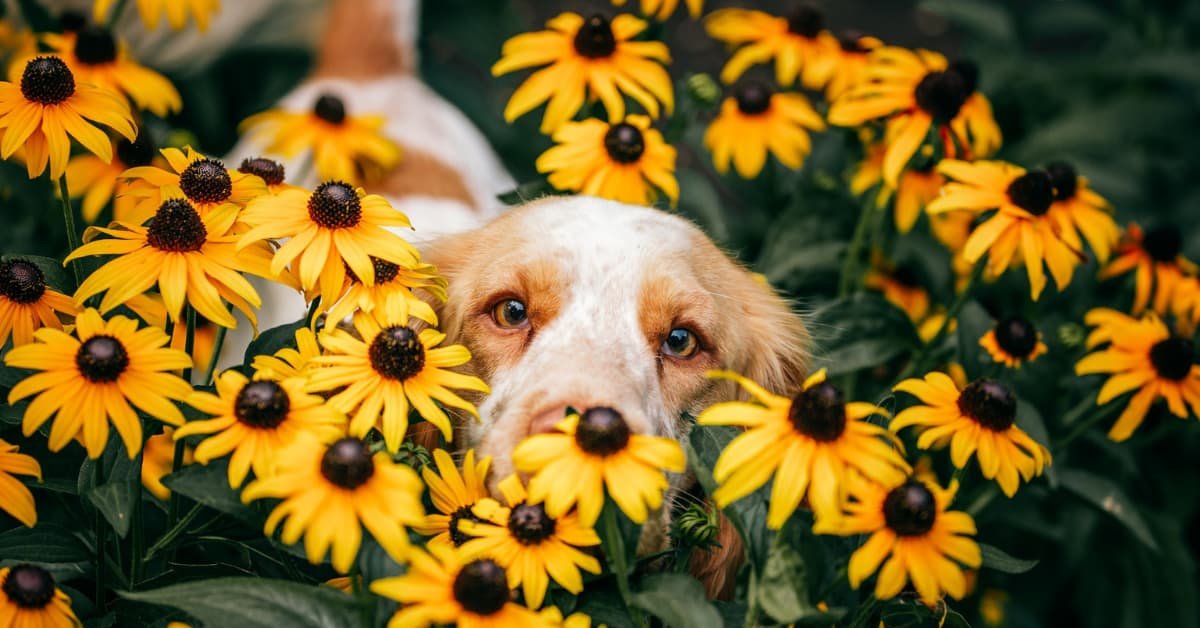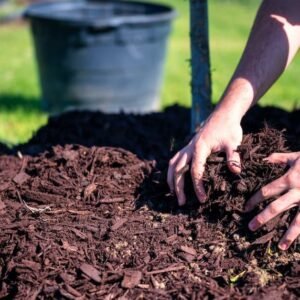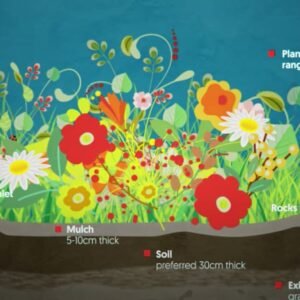
Whether you’re a seasoned gardener or a new dog owner, there are simple precautions you can take to create a dog-friendly garden that both you and your pet can enjoy.
In this article, we’ll share practical tips and ideas for making your garden dog friendly.
We’ll cover everything from fencing and plant safety measures to training techniques and distractions to prevent escapes.
Short Summary
- Sturdy fencing reinforced with chicken wire or mesh is essential to keep dogs safe and secure while allowing them to enjoy the garden.
- Removing toxic plants and storing hazardous chemicals in a secure location can prevent harm to dogs and their surroundings.
- Consistent training and positive reinforcement are crucial to establishing clear garden boundaries and keeping dogs away from potential hazards.
- Using distractions and toys, as well as regular fence maintenance, can help prevent escapes and damage to plants, creating a safe and happy environment for both dogs and gardens.
Fencing and Boundaries
Let’s make sure our garden is dog-friendly by fortifying or replacing old and worn fencing to prevent our furry friends from causing damage to plants or escaping through weak boundaries.
It’s important to consider the garden design and fencing materials that can withstand the wear and tear of our pets.
A sturdy, solid fence made of materials such as wood, vinyl, or metal can be a good investment for the long term.
It’s also important to check with neighbors and local planning committees before fitting a new fence to avoid any disputes.
Another option is to use a foot-high fence to train your dog and tell them where the boundary is.
However, for larger and more active dogs, this may not be enough. In this case, reinforcing the fence with chicken wire or mesh can be a good solution to prevent damage and escape attempts.
Overall, investing in strong, reliable fencing is an important aspect of creating a safe and secure garden environment for both our dogs and plants.
Plant Safety Measures
When planning our outdoor space, we should always research the safety of the plants we choose to ensure they aren’t toxic to our furry friends.
Toxic plants, such as daffodil bulbs, sweet peas, and tulip bulbs, can cause serious harm to our dogs if ingested.
It’s important to identify and remove any potentially harmful plants from our garden and replace them with dog-friendly alternatives.
In addition to plant safety, we must also consider the safe storage of hazardous chemicals.
Chemicals, such as fertilizers, pesticides, and herbicides, can be extremely dangerous if ingested by our dogs.
It’s important to store these chemicals in a secure location, out of reach of our furry friends.
If possible, consider using organic alternatives that are safe for both dogs and plants.
By taking these precautions, we can create a safe and happy environment for both our dogs and our gardens to thrive.
Training Techniques
We can improve the coexistence of our furry friends and outdoor space by utilizing effective training techniques.
Positive reinforcement and consistency in training are key to ensuring that dogs understand the boundaries of the garden and behave appropriately.
Here are some tips to help train your dog to be a well-behaved garden companion:
- Start with basic obedience training such as sit, stay, and come. These commands will come in handy when you need to call your dog away from a plant or out of the garden altogether.
- Use positive reinforcement such as treats, verbal praise, and playtime to encourage good behavior. This will help your dog associate the garden with positive experiences and make them more likely to follow the rules.
- Be consistent in training and enforce the rules every time your dog enters the garden. Dogs thrive on routine and will quickly learn what is expected of them if you are consistent.
- If your dog does misbehave, redirect their attention to an appropriate activity such as playing with a toy. Avoid punishing your dog as this can create fear and anxiety around the garden.
By using these training techniques, you can create a safe and happy environment for both your dog and your garden.
Remember, a well-trained dog is a happy dog!
Distractions and Toys
Using distractions and toys can be effective in keeping our furry friends entertained and away from potential garden hazards.
Dogs love to play and interact with their owners, so incorporating outdoor playtime activities and chew toy options can help keep them occupied and prevent them from getting bored and exploring areas they shouldn’t.
Some great chew toy options for dogs include durable rubber toys and bones, as well as treat-dispensing toys.
These toys can be filled with peanut butter or other dog-friendly treats, which will keep them occupied for longer periods of time.
Outdoor playtime activities such as fetch, tug-of-war, and frisbee can also be great options for keeping dogs active and entertained while also giving them the opportunity to burn off excess energy.
By providing these distractions and toys, we can ensure that our furry friends are happy and safe while enjoying the great outdoors.
Preventing Escapes
To prevent escapes, it’s important to fortify or replace old and worn fencing around our property.
Dogs can easily damage weak fences or find gaps to slip through, so it’s crucial to regularly check the perimeter and make necessary repairs.
This not only keeps our dogs safe and contained within our property but also prevents them from wandering off and getting into potential danger. Regular fence maintenance is also important before getting a new dog.
Checking for weak spots or gaps in the fence can prevent any future escapes.
It’s also a good idea to communicate with neighbors and local planning committees before fitting a new fence, as there may be regulations or restrictions in place.
By taking these preventative measures, we can ensure a safe and secure environment for our furry friends to enjoy our garden without the risk of escape.
FAQs:
How can I keep my dog from barking at other dogs while in the garden?
To stop our dog from barking at other dogs in the garden, we use training techniques and positive reinforcement.
We reward them when they stay quiet and redirect their attention with toys or treats. Consistency and patience are key.
Are there any specific types of grass or plants that are safe for dogs to walk on?
Consider grasses like Bermuda and Zoysia, and plants like sunflowers, marigolds, and petunias. But always research before planting and keep hazardous plants away.
Can I use mulch in my garden if I have a dog?
Consider cedar or pine straw mulch, and avoid cocoa bean or dyed mulch. When mulching, be sure to spread it evenly and avoid creating large piles that could attract your pup to dig.
What do I do if my dog accidentally ingests a toxic plant?
If our dog ingests a toxic plant, we should act quickly and seek first aid. We must identify the plant and contact our veterinarian for assistance. Symptoms may include vomiting, diarrhea, and seizures.
How can I make my garden more welcoming for my dog’s friends to come visit?
Creating dog-friendly play areas and integrating water features can be great options. Ensure safety by using non-toxic plants and secure fencing.



